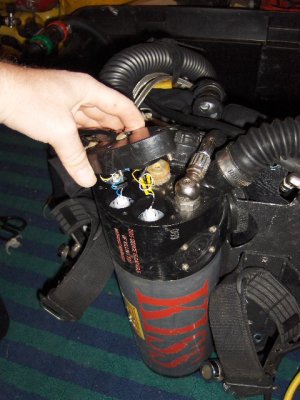 |
Start of by removing the lid and opening up the
kidney. Unplug the sensors, remove the o-rings and bolts and put them
somewhere safe. |
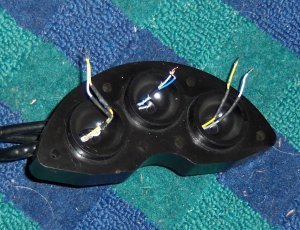 |
Option A: cut the plugs off and
cut the tails back to the right length for you. Trim
back the plastic insulation to expose 3-4mm of wire. Use this when the wires are too
long or where there has been some damage to the wires. |
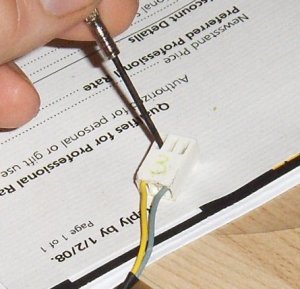 |
Option B:
Using something thin, like a jeweller's screwdriver, press down
the tab on the pin through the hole in the plug. The wire should pull free
of the plug with the pin still attached. When the wire is free, either cut
the pin off and trim back the insulation or just pull the pin off the
wire. Make sure you note which colour attaches to which side of the pin,
ou may get weird readings if you fix the plug with the wires
reveresed.
Use this when there is no problem with the wire but
either the pin or plug needs to be replaced. |
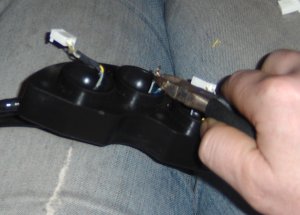 |
Crimp the new pin on to
the wire. The pins are designed with two tabs on them. Lay the wire down
the length of the pin so that the plastic sheath is just inside the tab on
the end of the pin. Using a pair of needlenose pliers, squash the tab
around the wire to clamp it in place (if using wirecutters like I am in
the photo then be careful not to chop through everything). The next tab
down should be crimped around the exposed wire end to form a good
connection.
Don't solder the wires to the pins, they are not
designed for it, they are meant to be crimped. |
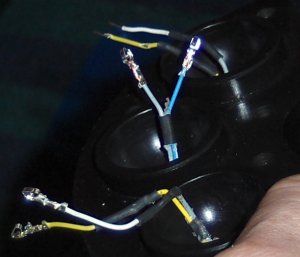 |
Attach any other pins
that are to be replaced. I did all three sensors because the cables were a
bit long. You want them as short as possible to avoid trapping them when
refitting the kidney but not so short that the pins pull out when you
remove the kidney. |
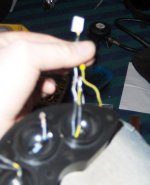 |
Remember I said make a note of which way round the
wires go in the plug? If you have cut off the old plug and saved
it then you are in luck, if you haven't then you have a 50/50 chance of getting
it right. If you've got it wrong then at best you will have a "-" sign
on the display, at worst you'll have strange readings/cell bahaviour. Remember on a KISS sensor, only
the two outside pins do anything, the middle pin does
nothing. |
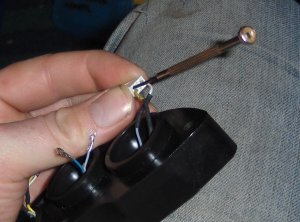 |
Slide the pins into the wide holes on the plug (the
narrow end is for attaching to the cell). The pin should go in with the
curled end tab facing upwards so that it clicks into the slot on the front
of the plug and locks it there. If it sticks then use something to poke it
down until you feel the click. If it is twisted then remove it and try
again or the wire will come loose eventually. |
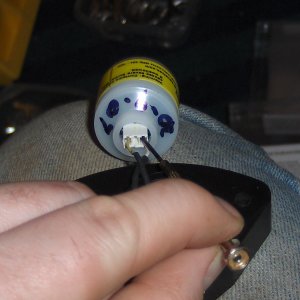 |
Fit
a cell onto the plug. If the pins are locked then the cell should go
on without much force and the pins should stay in place. If a
pin gets pushed out then poke it back down until it locks in place. Remove
the cell and refit it, the pins should stay locked this time. If not then
keep trying, you may even need to replace the pin with another if it gets
bent.
Refit the cells and replace the kidney (remember the
o-rings!). |







